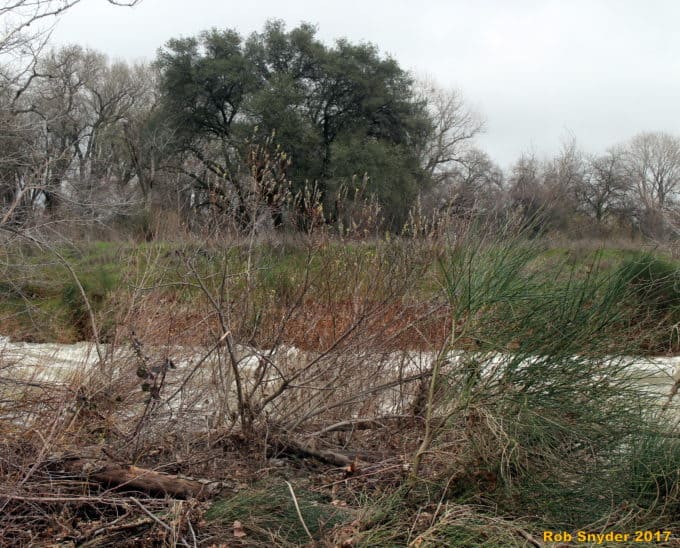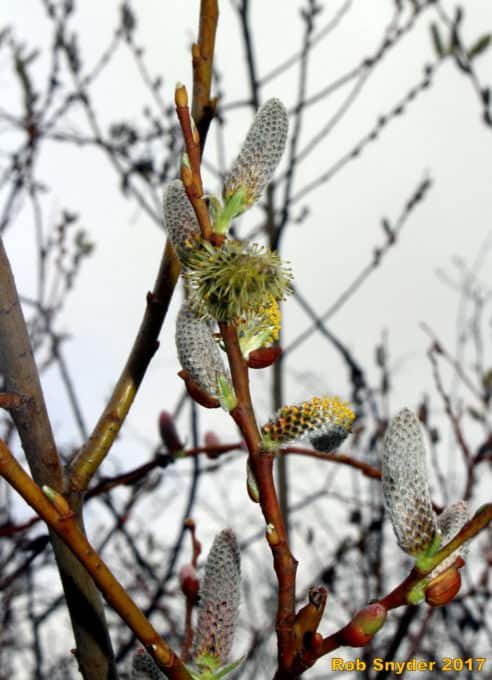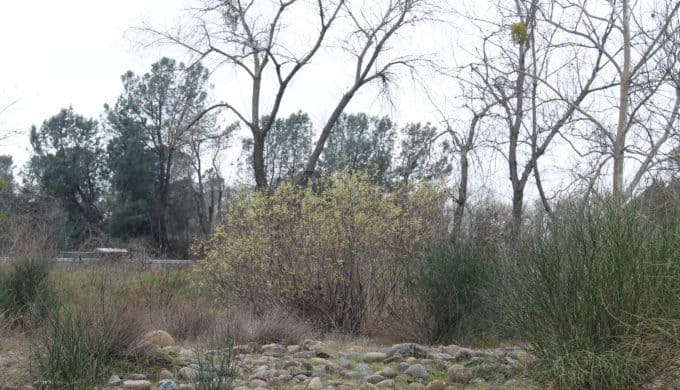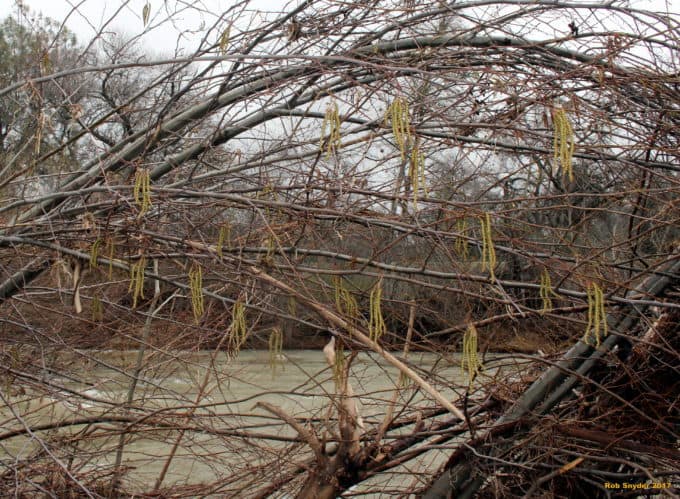As spring approaches and the days grow longer, more plants are starting to bloom, including pussy willows. These plants usually bloom here in Northern California between February and March. There are several species of this plant but Salix discolor is the most commonly found. I usually find these trees near water though they are also used as ornamental plantings. There is a tree in the image below in bloom.

Once you get closer to the trees, you can start to see the catkins, which are unique on this plant as opposed to the alders which are also in bloom now (For more information see Ben’s Blog from last week). There are two pictures below showing the difference between the two catkins. Here you can see the anthers of the pussy willow which don’t appear to have much powdery pollen on them because of the rain and wind. The dioecious trees produce both nectar and pollen, only the male produces pollen. They can produce a considerable amount of nectar but usually it is too cold for the bees to really work the plants. I’ve read that they can produce 100-150 lbs. of nectar and 1500 lbs. of pollen per acre, but have not seen this in any operations. The pollen has 20-25% crude protein, about average in blooming plants, but helps when nothing else is really blooming at the time.

A compelling point about the pussy willows is that they are easy to propagate; you can cut off new growth and place it in water for several weeks until roots are visible and then the cutting is now ready to plant. I have not tried this, but I would think rooting hormone would speed up the process. I may attempt to propagate some this spring. I will post photos if everything works out


